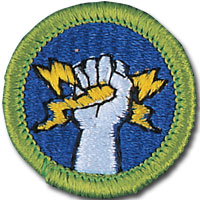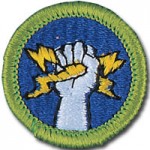
Circuits and electronics appeal to kids in ways that I never could have imagined. The very first time I set up a science booth at an educational convention, I put out several “electric boards” I had made, which had all kinds of motors, lights, buzzers, and gadgets that I had ripped off old toys and electronics just waiting to be hooked up. Kids rushed into the booth, eagerly snapping wires onto all the different components, making lights turn on, buzzers sound, motors whir, and more. Can you imagine how busy (and noisy) my booth was? Those boards never got a break the entire weekend the convention was held, and neither did the minds of those kids.
It’s interesting how these types of experiments are not usually taught in the classroom (at least, in the typical classroom setting). Unfortunately, since electricity is not well understood by most teachers, and the materials are usually expensive, it’s a subject that just glossed over, if not skipped entirely. Yet this is a vital area of science that so many other fields are based on. Kids that work through the projects and activities here are going to have a working understanding of electricity, magnetism, fields, forces, and more, which is a huge advantage when they hit the upper grades and college years. The activities and experiments on this page teach the big ideas behind Maxwell’s Principles. Students will discover how to detect magnetic poles and magnetic fields, learn about electromagnetism as they construct motors, generators, doorbells and earphones, and uncover the mysterious link between electricity and magnetism that marks one of the biggest discoveries of all science…ever.
[am4show have=’p8;p9;p11;p38;p92;’ guest_error=’Guest error message’ user_error=’User error message’ ]
Here’s a set of experiments that will help you meet your requirements. These are the official requirements as set by the Boy Scouts of America (in bold):
Requirements and Experiments:
Make a simple electromagnet and use it to show magnetic attraction and repulsion.
An electromagnet is a magnet you can turn on and off using electricity. By hooking up a coil of wire up to a battery, you will create an electromagnet. When you disconnect it, it turns back into a coil of wire. Since moving electrons cause a magnetic field, when connecting the two ends of your wire up to the battery, you caused the electrons in the wire to move through the wire in one direction. Since many electrons are moving in one direction, you get a magnetic field!
The nail helps to focus the field and strengthen it. In fact, if you could see the atoms inside the nail, you would be able to see them turn to align themselves with the magnetic field created by the electrons moving through the wire. You can test the nail by itself (with the wire removed) after you’ve done the experiment, because you may have caused it to become a permanent magnet.
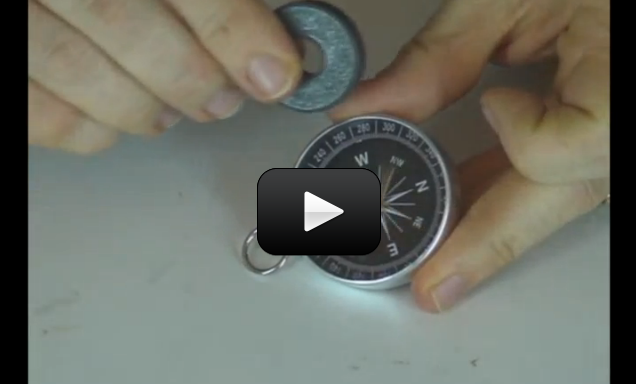 |
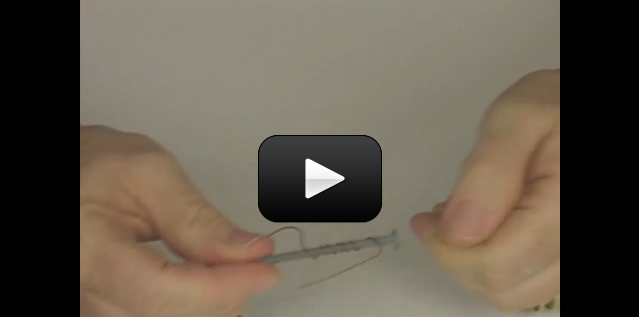 |
Make a simple drawing to show how a battery and an electric bell work.
Anytime you run electricity through a wire, a magnetic field shows up. We’re multiplying this effect when we coil the wire around a nail. A nail with wire wrapped around it is called an electromagnet. Think of it like a magnet you can turn on and off. Using a paper-clip switch, we can turn the electricity on and send it through the electromagnet, turning the ordinary nail and wire into a magnet. When we release the paper-clip switch, the current (electricity) stops flowing and our electromagnet turns back into ordinary nail and wire. When the electromagnet is energized (magnetized), it attracts the metal strip, which causes it to click downwards. Release the paper-clip switch, and the strip is no longer attracted to the nail (because it’s no longer a magnet). When the switch is on, it’s a magnet. When it’s off, it’s not a magnet. Magnets attract steel, and that’s why the strip bends and clicks. It’s amazing we could communicate over thousands of miles this way, but we did, using telegraphs and repeaters! Buzzers and bells are simply relays (telegraphs) that click on and off very rapidly.
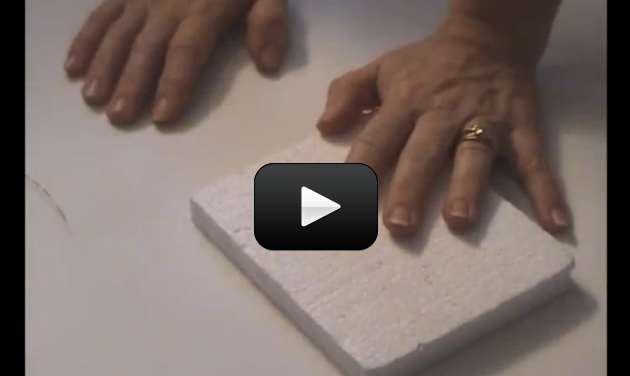 |
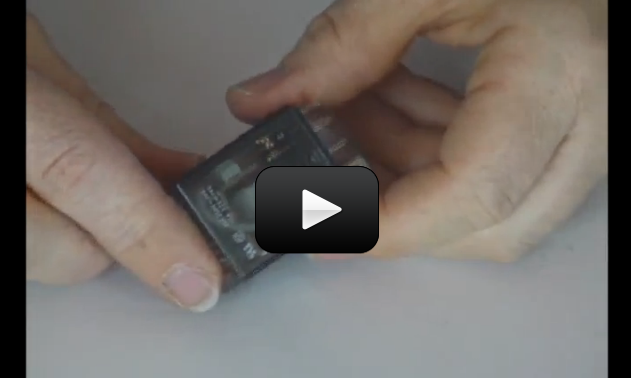 |
Explain the following electrical terms: volt, ampere, watt, ohm, resistance, potential difference, rectifier, rheostat, conductor, ground, circuit, and short circuit.
Electronics is all about how electricity flows through things like resistors, capacitors, transistors, IC’s, etc. Think of electricity like water flowing through a hose. Imagine you have a pump with the outlet of the pump going to a water wheel, and the inlet coming from the basin under the water wheel.
The pump is like a battery, the hoses like wires and the water wheel is like a light bulb, motor, or anything else that uses electricity. If we haven’t decided what to hook up there yet, we sometimes just call it a “device”. Now, as long as the pump is going, the water wheel turns. What would happen if you pinched the hose? The flow of water would stop and the water wheel would stop. This is what a switch does in a circuit – it stops the flow of electricity.
Just like the water coming out of a hose can spray out at different pressures and volumes, so can electricity. Imagine a small hose, like a garden hose with your finger over the end so it sprays water really far. This water is coming out at high pressure, and maybe sprays 20 feet. Pressure in electronics is called “Voltage”.
Now imagine that you had a really big pipe, and lots of water was coming out of it, but it was flowing slowly – just kind of pouring out the end. The water is coming out at low pressure, but at a high volume or amount. In other words, lots of gallons of water are coming out, but it only travels a foot or two through the air as it dumps out of the pipe. The volume of water is equivalent to current (measured in amps) in electricity. Now, imagine a big pipe with a lot of pressure – lots of gallons coming out, and it sprays for 20 feet. This is like high voltage AND high current (a deadly combination if you touch it).
So, voltage is electrical “pressure” and current (amps) is electrical “volume”. Together they determine how much total energy is following through a wire. For example, if I have 12 volts at 1 amp flowing through a circuit, that contains a certain amount of energy (the ability to do work). If I have 12 volts at 2 amps, I have twice as much energy. The way we measure energy in electrical circuits is using units called watts. Watts = Volts x Amps. We’ll talk more about this soon. For now, just know this is true.
We use abbreviations for common words in electronics. Here are a few to keep in mind: V=Volts, I=Amps or current (Don’t ask why it’s “I” and not “A” – engineers are funny that way), and W=Watts.
Resistors are one of the most common electronics components. Their job is to resist the flow of electricity. They are kind of like having a valve in the middle of a hose, and closing it part way. It will reduce the volume of water that flows. Resistors reduce the amount of current that flows through a circuit (they turn the current they don’t let through into heat, so sometimes they get warm). Engineers and geeks say they “limit current”. A resistor has two leads or wires connecting to it. It has no polarity (it’s leads can be connected either way) and it is what’s called a “passive” component. This means it doesn’t need any extra electricity connected to it to do its job (a computer chip, for example, is not passive. You have to connect power to it, as well as the circuit you want it to work in). If you take a volt meter and connect one probe to each side of a resistor in an operating circuit, you’ll get a voltage reading. This means that the resistor is “using” some of the current that’s going through it. It’s not really using it up, but it is converting the electricity into heat, so it can’t be used as electricity anymore. Resistors affect current according to something called Ohm’s law. I’ll mention it here because anyone who’s an engineer would get upset if I didn’t. But I’m not going to explain it in detail. Here it is: V=I x R (Volts = Amps x Resistance)
Resistance is measured in units called Ohms. Resistors look like candy-striped hot dogs. Their job is to limit current to keep sensitive electronics from being overloaded. If you break open a resistor, you’ll find a pile of graphite. If you have a digital multimeter, draw a line on a sheet of paper with a graphite pencil, and place one probe near the end of the line. You can measure the change in resistance along the line with your other multimeter probe! Okay, you can look it up to learn more about it if you want, but for now, we’re just going to keep in mind that resistors reduce current. If you hook up a couple of them in a circuit called a voltage divider, they can reduce voltage too. A couple of useful resistor factoids you should know: Two resistors connected in series add their resistances together. So if I have a 100 ohm resistor and a 50 ohm resistor and connect them in series, I’ll get 150 ohms.
If I connect two resistors in parallel, it actually decreases their total resistance. There’s an equation for calculating it (called the parallel resistance formula). But the general idea is that half the current goes through each one. So, if you connected two 100 ohm resistors in parallel, you would end up with the equivalent of a 50-ohm resistor. The last thing to know about resistors is how to determine their value (how many ohms they are). For whatever reason, instead of printing numbers on them like most other electronic components, they put colored stripes on them. So, we compare the stripes to a color code chart, and it tells us how many ohms a resistor is.
Most resistors have 4 colored stripes on them. Here’s what each one means.
- The first band gives the first digit.
- The second band gives the second digit.
- The third band indicates the number of zeros.
- The fourth band is used to show the tolerance of the resistor
By the way, there are these cool things called variable resistors. These are resistors that you can change the value of by turning a knob.
Schematics A schematic is a simple line-drawing of an electrical circuit. It makes it easy to draw a circuit without having to draw actual pictures of each part. A wire is simply a line. A motor is a circle with an “M” in it (lots easier than trying to draw a picture of a motor. Take a look at the schematic symbols below, as well as the sample circuit to get an idea.
 |
Connect a buzzer, bell, or light with a battery. Have a key or switch in the line.
Although we can’t ”see” electricity flow through wires, you can certainly see, hear, and feel its effects: the light bulb flashing on, the hair dryer blowing, the heat generated by a hot wire, and so forth. In order to understand electricity, though, we’re going to talk about water because that’s something that you already have experience with.
Electricity is like water going through a pipe. Imagine you have a big pipe connected in a circle, so it connects back to itself in a loop. The water needs a pump in order to move through the pipe. Electricity is like the water going through the pipe, and the battery is like the pump. Now imagine breaking open your pipe to insert a waterwheel. Seal up the cracks and turn on your pump. Can you imagine what happens now? When the pump (battery) turns on, the water (electricity) flows through the pipe and turns the waterwheel. The waterwheel is like your motor or light bulb.
Suppose you add in a valve so you can turn the water on and off through your pipe. What is the valve like in your circuit? It’s just like a switch in a circuit, because it interrupts the flow of electricity. What would happen if you broke your pipe? Imagine you have a sledgehammer and you smashed open the pipe. Does it matter which side of the waterwheel you break it on? It does! If you break it before the waterwheel, the waterwheel won’t turn. If you break it after the waterwheel, it might turn for a minute, but then it will stop because there’s no more water going into the pump because you busted open the pipe, so the flow stops either way. That’s what happens when you disconnect one of your wires in your circuit. No more electricity can flow.
Now imagine you’ve got a whole, complete pipe again. What would happen if we take out the pump, turn it around, and stick it back in again? The water goes the other way! What direction does the waterwheel go? It starts turning in the opposite direction also. Some waterwheels are designed to go either forward or backward, while other waterwheels can only move forward due to the shape of their blades and how they were made. Some electrical components like buzzers and LEDs are polarized, meaning that they do not work backward. Other electrical components, like motors and light bulbs, do work forwards and backward. When you work with circuits, if you find a component that doesn’t work, try turning it around in the circuit to see if that fixes it.
There are many different electrical components that make the electrons react in different ways, such as resistors (which limit current), capacitors (these collect a charge), transistors (these are like an electronic gate for electricity), relays (electricity itself activates a switch), diodes (which are a one-way street for electrons), solenoids (are an electrical magnet), switches (which are stoplights for electrons), and more. We’re going to use a combination of LEDs, buzzers, and motors in our circuits in our unit together.
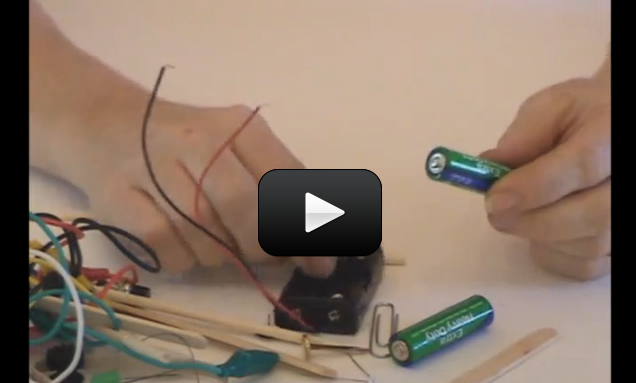 |
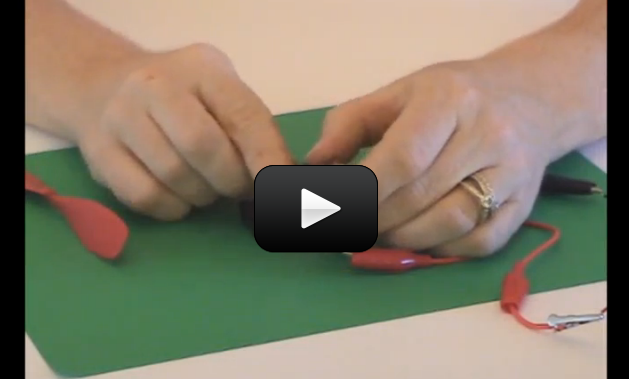 |
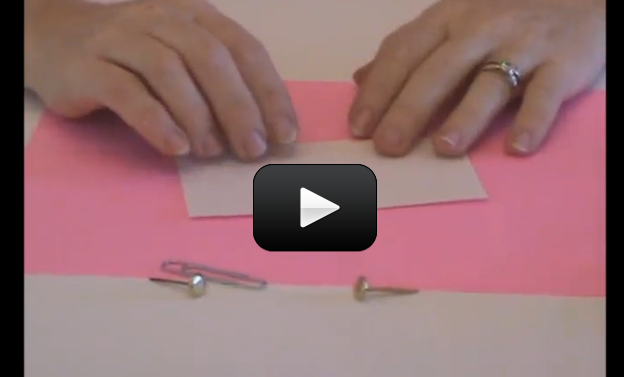 |
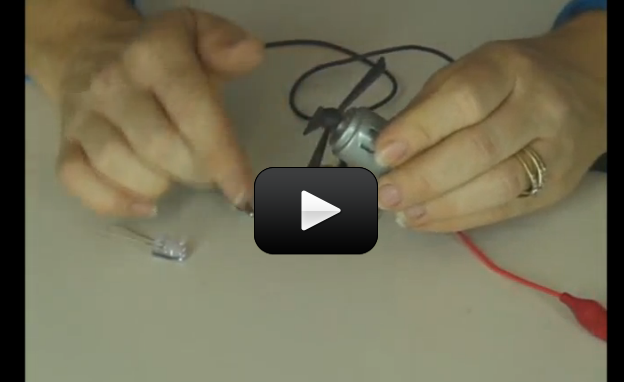 |
Make and run a simple electric motor (not from a kit).
When you run electricity through a wire, it turns the wire slightly into a magnet. When you stack wires on top of each other (as you did with the coil of wire), you multiply this effect and get a bigger magnet. In one of the motors we’re about to make, a coil of wire is in an O-shaped ring which is allowed to rotate. When the ring rotates to a certain position, current flows through the circuit. When this happens, everything connects together and turns the coil wire into an electromagnet, which is then attracted to the magnet on the battery. When the ring rotates again, it moves around until its new position breaks the connection and turns it back into just a coil of wire. The coil continues to float around in a circle until it hits the connected parts again, which re-energizes the coil, turning it back into an electromagnet, which is now attracted to the magnet on the battery, which pulls it around again…and ‘round it goes!
 |
 |
Build a single-pole, double-throw switch. Show that it works.
There are ways of using special circuits to make your motors go both forward and reverse using only one switch. This comes in handy when building robots and vehicles! We’ll be learning how to use a double-pole, double-throw (DPDT) switch as well as an SPST (single-pole, single throw) and a SPDT (single-pole, double-throw). If it looks strange now, just wait until you watch the video – it’ll all make sense!
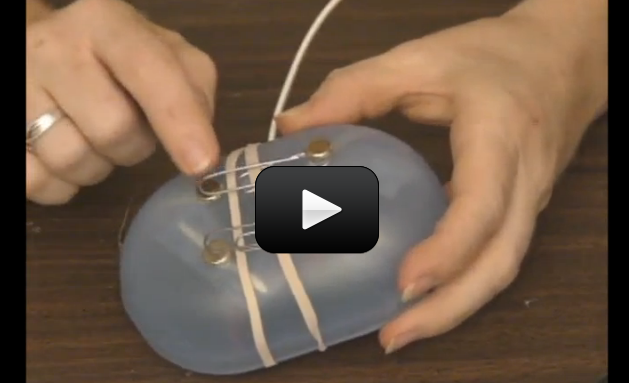 |
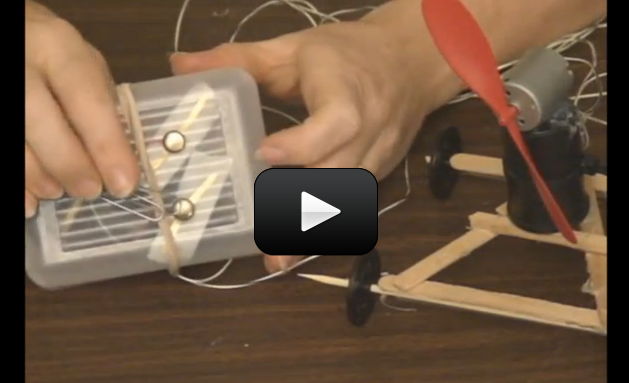 |
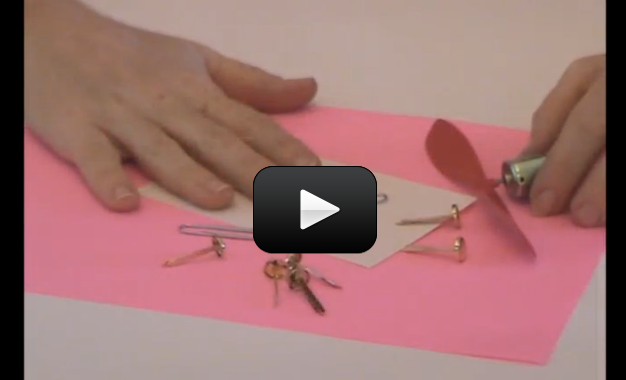 |
When you earn your badge, send us a photo so we can post it to the website! Good luck!
[/am4show]

